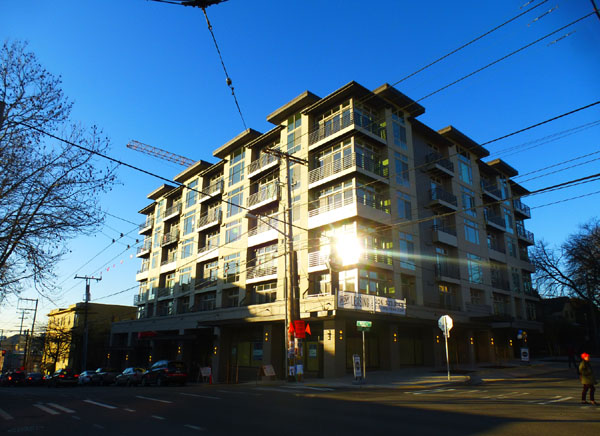Why Building Housing In Seattle Is Essential For Social Equity
One of the biggest threats to social equity in Seattle is a shortage of housing. Because when demand for housing overwhelms supply and drives up prices, it is the poor who lose. And the essential solution is this: build more housing.
Landlords and developers both do well in a seller’s market for housing. And the affluent are fine too, because they can always outbid those with less financial means for the limited housing that is available.
But the people who do not fare well are those in the lower end of the income spectrum, who are denied access to the all the opportunities and benefits of living in a a prosperous city like Seattle. When demand is not met by supply, inflated prices across the board put housing increasingly out of reach. And those with the lowest incomes are always priced out of the market the soonest and the furthest.
To be clear, government subsidy for housing is also necessary for the deeper levels of affordability. And due to high costs of production, new housing can often be too expensive for a significant portion of lower-income households. Nevertheless, in a high-demand housing market like Seattle’s, increasing the supply of market-rate housing is imperative for equitable access to housing. Here are ten reasons why:
- First of all, increased supply puts downward pressure on prices throughout the housing market, and that preserves affordability for more households.
- Because supply enable more households to find an affordable option, limited funds for housing subsidy can go further to provide more financial help for the lowest income households who need it most.
- More housing means more choices for people to find an affordable housing option that fits their unique needs, such as microhousing.
- Even expensive new housing helps, because every high-end unit that’s produced absorbs demand from a wealthy consumer who otherwise would be outcompeting those with lower incomes for existing housing.
- Likewise, even if new housing units are small they still absorb demand, which reduces competition for existing single family houses, and preserves more options for families with children to live in the city.
- When new housing is provided near good transit, more households have the option to go car free, which significantly reduces household expenses.
- When new housing is not available, demand will induce renovation of older housing, thereby removing it from the affordable stock.
- More housing expands the tax base and increases funds available to subsidize housing for the lowest income households through programs such as Seattle’s Housing Levy.
- The cost and financial risk of building housing falls on private developers and lenders, not on cash-strapped municipalities—social equity is improved with very little public expense.
- Lastly, in the bigger picture, increasing housing supply in Seattle supports widely adopted sustainable development goals to address sprawl, energy, and climate change, all of which disproportionately impact the less fortunate, whether at the local, regional, or global scales.
In comparison to the above list, the purported downsides of housing development are less tenable. One commonly cited concern is displacement of existing affordable housing. But most of the larger multifamily infill projects in Seattle are built on empty lots or spent commercial buildings, and do not cause any such displacement. In cases where new housing would take out existing low-rent units, preventing the development is likely to be a short-lived victory. Because if the location is desirable, the resultant pent-up demand will inevitably accelerate rent increases in any housing that was preserved.
In Seattle, most of the negative noise over new housing is about the impact on neighbors—views, shadows, aesthetics, undesirable tenants, parking, traffic. And what it boils down to is a choice between those who were lucky enough to get theirs first in Seattle, and those with limited financial means who want to find a place to live here now. If social equity is truly the goal, then the latter group must be given priority.
These battles over growth have played out countless times in Seattle, the current example being the debate over rolling back recent upzones in low-rise residential areas. If City Council decides in favor of those who wish to restrict housing development, we should all recognize that they will also be deciding against social equity.
The trends that are creating strong demand for housing in Seattle are not going away any time soon. Seattle has a massive, ongoing need for new housing to meet this demand and control prices. If supply continues to fall behind, not only will more lower-income households be priced out, but the subsidy required to make up for the widening affordability gap will increasingly eclipse available City funding resources.
If there was a shortage of shoes that drove prices so high that only the wealthy could afford good shoes and the poor were going barefoot, it would be obvious that increasing shoe production should be a priority to improve social equity. So too, with housing.
>>>
Photo of new housing at 13th and Pine on Capitol Hill by the author. This post originally appeared at Smart Growth Seattle.


